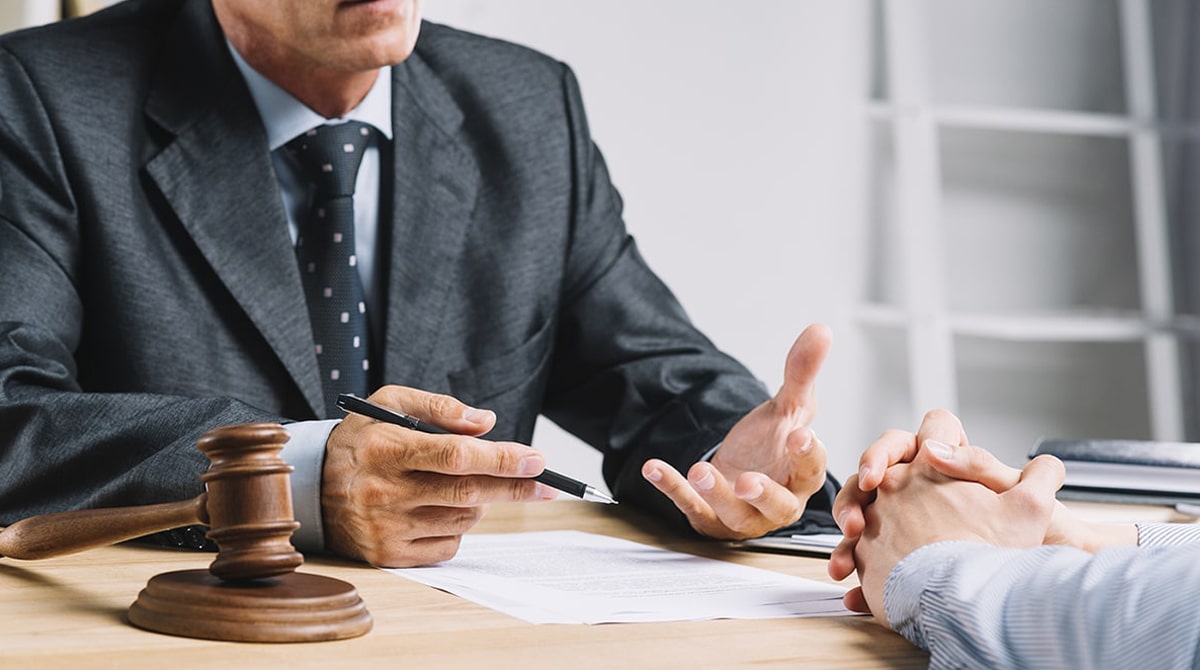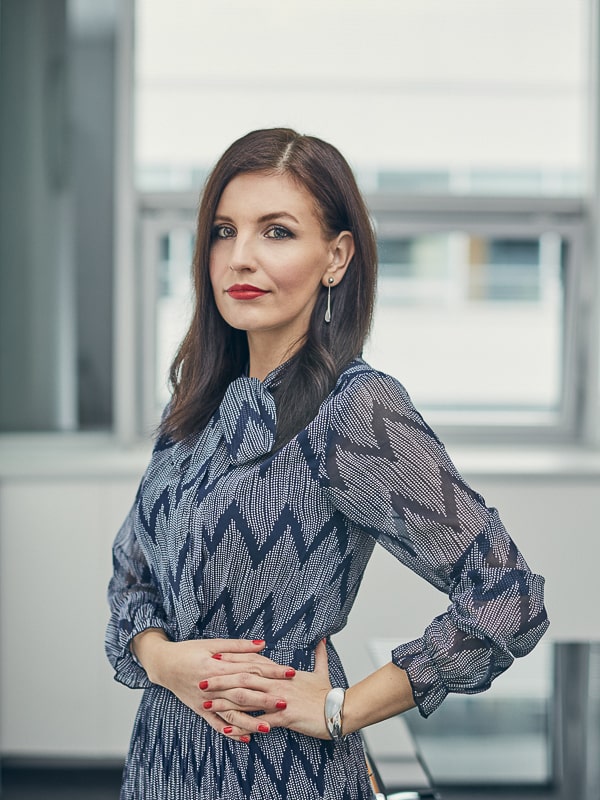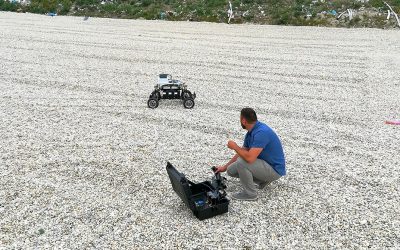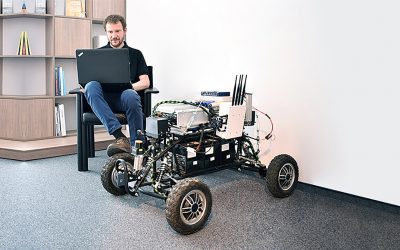Robots against coronavirus. How does legislation take their safety into account?

July 20, 2020 | Related
Technological development is moving at a fast pace and innovations are becoming a more common part of our lives. Their importance is also gaining significance during the pandemic when modern technical systems help in critical zones by measuring temperature, disinfecting rooms, or delivering food. Robots are thus closer to humans than ever before and the question of their safety is also coming to the fore. This should be ensured by the legislation. We, therefore, addressed the partner of the law firm Malata, Pružinský, Hegedüš & Partners Ltd. (MPH), Zuzana Jahodníková, who specializes in IT and technology legislation to bring us closer to how the legal system is ready for such a revolution.
The implementation of robots in an environment where they come into contact with humans is often a long process, accompanied by many safety precautions. The robot undergoes a tests in which different situations are simulated and, they also must be equipped e.g. with double protection for the case of a failure. However, in the time of the COVID-19 virus, it was necessary to move forward quickly and in some countries, robots have replaced nurses, police officers or receptionists in their work from one day to the next.
Although these are rather simple tasks, the robot comes into contact with humans, which is why it is necessary to pay attention to greater safety. The safety question of robot systems is not a new thing.
In times of laborious, manual work in factories, people were replaced by faster and more effective robotic arms and in addition to their excellent work performance, it was also necessary to start paying attention to the risks. Today robotic arms are already a common part of factories that are accompanied by many safety standards, such as a precisely defined movement or a precisely defined area. Any accidents or failures are therefore very rare and easier to predict. However, it is different with mobile and, especially, autonomous robot technology, which is one of the specializations also of the company RoboTech Vision.
Do precise standards also exist for robots? Which standards should meet a mobile robot that comes into contact with humans according to the law?
“The topic of setting any standards, of which the subject is mobile or autonomous robotics, is always rather complicated. So far, no complex set of rules has been adopted that would show us how to properly and effectively solve situations related to the activity and insertion of autonomous technologies. On top of that, it is very difficult to find general standards, rules or principles if we haven´t and, also cannot have, any idea about future possibilities of artificial intelligence.
For this very reason, it is very difficult to identify common, standard features that a mobile robot should meet according to the applicable European or Slovak legal regulations. However, it is important to indicate that, in addition to the technical, exclusively neutral legislation, which regulates the areas of product safety, consumer protection, cybernetic protection and protection of personal data, for products and services based on artificial intelligence it is basically possible to apply the so-called sector legislation without any fundamental restrictions, which is used, for example, in the field of aircraft, transport, medical supplies.
Robotics is nowadays apllied in the field of manufacture, in factories and concerns even products and services that use the so-called artificial intelligence. It is a really broad term that includes a wide variety of products and services that are used in transport, energy, medicine or finance. In other words, with the current legal regulation of all the various technologies with integrated artificial intelligence it is characteristic that one relies on a flexible interpretation and application of rules from the already existing legal framework.
On the other hand, however, the European Union is aware of the limitations of its current attitudes and is devoting itself to the topic of system adaptation of the legal framework for the application of artificial intelligence. The fact that on european level it was the European Commission that defined for the first time in 2018 the meaning of the term artificial intelligence (AI) can be seen as a certain progress in this area. Within the framework of the European Union, the topic is primarily devoted to a group of experts who deal with the preparation of analyzes and recommendations, which include not only legal but also ethical, social and socio-economic questions that deal with the needs of the regulation of artificial intelligence application.
A common phenomenon of the first attempts to regulate artificial intelligence is the creation of ethical codes according to which the technologies using artificial intelligence should be constructed. However, these are not legally liable. Lawyers and the general public are therefore waiting to see how regulation will develop in this area.“
Who verifies the compliance of these standards? Is there an authority that oversees the safety of mobile robots or a group of renowned experts who are responsible for assessments in the field of artificial intelligence?
“Specific regulation of technologies with artificial intelligence is currently more focused on defining its basic principles and objectives. We therefore have to wait for a complete and detailed regulation. For the same reason, it is not yet possible to speak about a system or network of specialized state bodies that would deal with this problem. However, the first institutions around the world that are devoted to this agenda are trying to form a certain strategic advantage compared to other countries. For example, in the United Arab Emirates, a Ministry of Artificial Intelligence has already been created.
The institutionalization of the regulation of artificial intelligence is currently concentrating on the establishment of research centers or specialist groups under the patronage of international organizations, that are researching the possibilities of future regulation of artificial intelligence, as well as the challenges associated with the regulation. For example, World Intellectual Property Organization launched a public comment on issues related to the regulation of intellectual property rights concerning artificial intelligence.
When creating standards, in the first place, comments and opinions about possible regulations are examined, how to adapt this area and thus outline the basic rules for questionable or critical situations. From a legal point of view, particularly interesting are questions as to whether the originator of patented solutions could also be a system based on artificial intelligence or rather just a human being. These are all questions that are a subjet of a serious topic for discussion nowadays, and the answers to them will be the result of a long-term process.”
Are the current standards sufficient? Do you think legislation is able to keep pace with the rapid development of technology and what are the shortcomings in the current legal system in this area?
“To a certain extent, law will always have to catch up with technical development. Aside from the fact that not only lawyers’ ability to predict the future of technological advances is limited, the law unfortunately begins to look at the issue of regulating a wide range of relationships related to the use of new technologies only when practical problems occur.
Setting rules is definitely an easy process. Especially in cases of artificial intelligence and its autonomous behavior, besides legal questions, there are other complicated questions that mankind cannot yet answer “correctly”. While categories such as will, awareness, independence and decision-making were literally only assigned to living beings, in the case of artificial intelligence we come up against a limit of our previous knowledge and understanding. For this reason, we have to create something that has not been there until now and that will regulate the situations that we still have no real idea of.
The current regulation of artificial intelligence is therefore only at the beginning and is doing its best with the existing legal framework. However, just because it doesn’t give us answers to many questions, I am convinced that the increasing of normative activity in this social area is only a matter of time. In this sense, one can expect a repetition of the scenario, which we already know very well, for example from the area of drone regulation or blockchain, where the law and the regulators have to intervene and prepare a certain functionality framework.”
How would you compare the legislation in this area in Slovakia with that abroad? Is this problem covered in some way or do we based on of the international law?
“It’s really hard to compare at the moment. But that doesn’t have to be a bad sign at all. It is important to be aware that trends such as digitization or the development of artificial intelligence is a global phenomenon to which we must also seek answers at the international and cross-border level. The regulation of artificial intelligence often has to come from solutions to ethical, moral, or even philosophical questions. Only international cooperation in the formation of the legal framework for artificial intelligence ensures the competitiveness of not only the European but also the Slovak industry by means of uniform application of the basic rules. It is important that, as a common European legal framework progresses, we take an active part in shaping it.
In Slovakia, it is possible to refer to the activities of our Deputy Prime Minister for Investment and Informatization, which has carried out an analysis and proposal with which Slovakia should join the initiative of the European Union in the establishment of European centers of excellence for artificial intelligence. At the same time, the Office published a guide for the introduction of artificial intelligence, which contains recommendations to support the use of artificial intelligence under Slovak conditions. This guide also contains examples of solutions for implementing artificial intelligence in marketing, or cooperation.”
What is the biggest impetus for the creation of new laws in the robotics area? Is it companies that strive to be protected or is it an event that indicates a shortage in legislation?
“There can be various impetus, but it has been shown that the strongest is the one that comes from the needs of a company that wants to solve concrete cases or has the need to cope with an acute situation. In law we have perceived for years that the need for regulation is very strong and that it will increase more and more with the arrival of new technologies. Nowadays we know that even without accidents and crisis situations there is a reason for developing such rules. On the other hand, when we speak of regulation, it also has to be reasonable in a certain way, and when it is being formed, one should actively evaluate what is necessary to regulate and what is not.
We are already seeing analyzes that speak of the pandemic COVID-19 speeded up the so-called Fourth Industrial Revolution. In an extremely short time, an essential part of working and professional life had to shift to the digital area. Many areas think about how it would be possible to design their processes more effectively and how we should use the experiences from this time. If we look at the area of healthcare, considerations are emerging as to how digitization and robotics can quickly and effectively manage a lot of patients.
On the other hand, the crisis caused by the pandemic could influence decisions of many companies as to whether it makes sense to make large investments or not. In any case, however, I think that the COVID-19 pandemic and the responsible planning by countries to prevent further pandemics could increase the interest in the development of artificial intelligence and robotics, which in the end also will have an impact on the subsequent development of legal regulation.”
Author of the post
Marketing manager
Related articles
Who is responsible for an autonomous robot accident? An lawyer answers
We have improved autonomous navigation by a visual system and obstacle detection
We have developed autonomous map navigation and obstacle avoidance
Categories
LATEST POSTS
Androver II underwent testing for a geological project
Jul 19, 2018 | News
Androver II underwent testing for a geological projectJuly 19, 2018 | News A geological research company shown interest in the prototype Androver II mobile robot developed by RoboTech Vision. The robot should become part of a project that...
RoboTech Vision visited the international exhibition Automatica
Jun 21, 2018 | Presentation
RoboTech Vision visited the international exhibition AutomaticaJune 21, 2018 | Presentation RoboTech Vision visited the largest exhibition for automation and service robotics in Munich. The team looked at the latest innovations and technologies...
The first test of Androver II was successful
Mar 19, 2018 | Development
The first test of Androver II was successfulMarch 19, 2018 | Development The Androver II mobile robot developed by RoboTech Vision successfully passed the first test outdoors. The robot is controlled by a teleoperator and is to be part of a...




